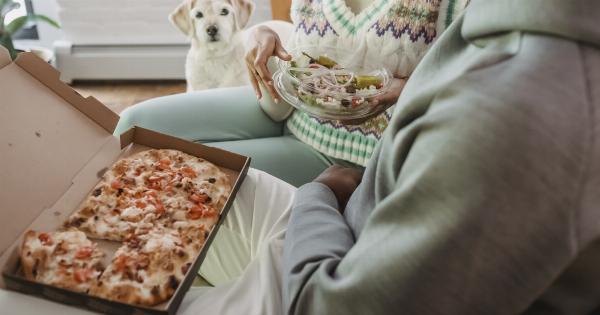Mealtime can be a challenging moment for dog owners. The scent of delicious food fills the air, and our furry friends can’t help but get excited.
Whether it’s their pleading eyes, relentless begging, or attempts to snatch a bite from our plates, dealing with these behaviors can be frustrating. However, it’s crucial to establish boundaries at mealtime to ensure our dogs understand what is acceptable behavior and what is not. In this article, we will explore effective strategies to set boundaries for dogs during mealtime.
1. Establish a Designated Feeding Area
Assigning a specific area for your dog’s meals helps create a clear distinction between their eating space and the rest of the kitchen or dining room.
This can be as simple as placing a mat or a bed in a corner or using a designated feeding station. By having a defined area, your dog will associate this space with their meals, and it will help limit their attempts to invade your eating space.
2. Consistent Mealtime Routine
Establishing a consistent mealtime routine is essential for setting boundaries. Dogs thrive on routines, as it provides them with a sense of security and predictability. Set specific meal times and stick to them.
By following a regular schedule, your dog will learn when it’s time to eat and when to respect your mealtime.
3. Ignore Begging Behavior
It’s hard to resist those adorable puppy eyes, but giving in to begging behavior will only reinforce the undesired action. If your dog starts begging during mealtime, it’s important to ignore them completely.
Do not make eye contact, speak to them, or offer any food from your plate. Be patient, as it may take some time for them to understand that their begging is ineffective.
4. Set Clear Boundaries
Consistency is key when setting boundaries for dogs during mealtime. Create a firm verbal command, such as “No” or “Stay,” and use it every time your dog crosses the boundary.
Use a calm but assertive tone to communicate your expectations clearly. With time and repetition, your dog will associate the command with the boundary and learn to respect it.
5. Reward Good Behavior
Positive reinforcement is an effective tool in dog training. Whenever your dog respects the mealtime boundaries, reward them with praise, treats, or a designated portion of their own food.
This will help reinforce the desired behavior and motivate them to continue following the set boundaries. Remember to always reward good behavior immediately to strengthen the association.
6. Use Distractions
Sometimes, your dog may need a little distraction to divert their attention during mealtime. Provide them with a food puzzle or a special treat-dispensing toy.
These interactive toys can keep them occupied and mentally stimulated, preventing them from focusing on your meal. By redirecting their attention to a more appropriate activity, you are setting them up for success.
7. Avoid Table Scraps
Feeding your dog table scraps not only encourages begging and unwanted behavior but can also be harmful to their health. Many human foods are toxic to dogs, and feeding them from your plate can lead to digestive issues or even poisoning.
Make it a rule to never feed your dog from the table, and educate your family and guests to do the same.
8. Use Physical Barriers
If your dog constantly tries to steal food from the table or countertops, it may be necessary to use physical barriers to prevent their access. Install baby gates or use pet-specific barriers to keep them out of the kitchen or dining area during meals.
Physical barriers can be especially helpful when you have guests over or when you’re eating in a busy environment.
9. Provide Adequate Exercise
Dogs who are physically and mentally stimulated are less likely to display unwanted behaviors. Before mealtime, ensure your dog receives enough exercise to release their excess energy.
A tired dog is more likely to relax and nap instead of focusing on your food. Regular exercise routines can significantly improve their behavior during mealtime and throughout the day.
10. Seek Professional Help
If your dog’s mealtime behavior continues to pose challenges despite your best efforts, consider seeking professional help from a certified dog trainer or behaviorist.
They can assess the situation and provide tailored guidance to address the specific issues you and your dog are facing. A professional’s expertise can make a significant difference in effectively setting boundaries during mealtime.
Conclusion
Mealtime boundaries are essential for maintaining a peaceful and enjoyable dining experience for both you and your dog.
By establishing a designated feeding area, maintaining a consistent routine, setting clear boundaries, and using positive reinforcement, you can effectively train your dog to respect mealtime boundaries. Remember to be patient, consistent, and seek professional help if needed. With time and effort, you can have well-behaved kitchen canines who understand and respect the rules of mealtime.

























